Entering the Enchanted Realm
Das Betreten dieser tiefblauen 50 m langen, 10 m breiten und 1.8 m hohen Eisgrotte auf der zugefrorenen Gletscherlagune des Svínafellsjökull Gletschers in Skaftafell, Island, erzeugt eine ehrfurchtgebietende Atmosphäre. Dieser bis zu 1000 Jahre alte Schnee ist durch Metamorphose in hochverdichtetes Gletschereis umgewandelt worden. Dadurch absorbiert das Eis das sichtbare Licht bis auf den gestreuten blauen Anteil, der die tiefblauen Farben des welligen Eises erzeugt. Dieser Gletschertunnel entstand durch eine Gletschermühle. Regen und Schmelz-wasser sammeln sich auf der Gletscheroberfläche und dringen als Wasserfall durch Spalten im Gletscher in die Tiefe vor. Das im Gletscher gestaute Wasser fließt talabwärts wobei es lange Tunnel und Grotten in das Eis schmilzt, die am Ende des Gletschers als Gletschertore zutage treten. Die feinkörnigen Sedimente im Schmelz-wasser sowie die windverfrachteten Sedimente geben dem gefrorenen Schmelzwasserstrom eine braune Färbung, während der obere Teil im tiefen Blau des Eises erstrahlt. Durch die schnelle Fließbewegung des Gletschers von bis zu 1 m pro Tag über unebenes Gelände bilden sich tiefe Spalten.
Januar 2011
Canon 5D MkII, Canon L 16-35 mm, f/16, 30 Sek, 50 ASA, Stativ
Mehr Information:
http://www.lichtjahre.eu
Where Geoscience Meets Art
----
Entering the deep blue of this 50 m (164 ft) long, 10 m (33 ft) wide and 1.8 m (6 ft) high ice cave on the frozen lagoon of the Svínafellsjökull glacier in Skaftafell, Iceland caused an awe-inspiring atmosphere. This up to 1000 years old snow has metamorphosed into highly pressurized glacier ice that contains almost no air bubbles. Thus it absorbs the visible light despite the scattered shortest blue fraction, giving it its distinct deep blue waved appearance. This cavity in the glacier ice formed as a result of a glacial mill, or moulin. Rain and meltwater on the glacier surface is channelled into streams that enter the glacier at crevices. The waterfall melts a hole into the glacier while the ponded water drains towards lower elevations by forming long ice caves with an outlet at the terminus of the glacier. The fine grained sediments in the water along with wind blown sediments cause the frozen meltwater stream to appear in a muddy colour while the top of the cave exhibits the deep blue colour. Due to the fast movement of the glacier of about 1 m per day over uneven terrain this ice cave cracked up at its end into a deep vertical crevice, called cerrac. This causes the indirect daylight to enter the ice cave from both ends resulting in homogeneous lighting of the ice tunnel.
January 2011
Canon 5D MkII, Canon L 16-35 mm, f/16, 30 sec, ISO 50, tripod
More information:
http://www.lichtjahre.eu
Where Geoscience Meets Art
Herzlichen Dank an Michael Krüger MK
für den Votingvorschlag sowie an alle Votenden!
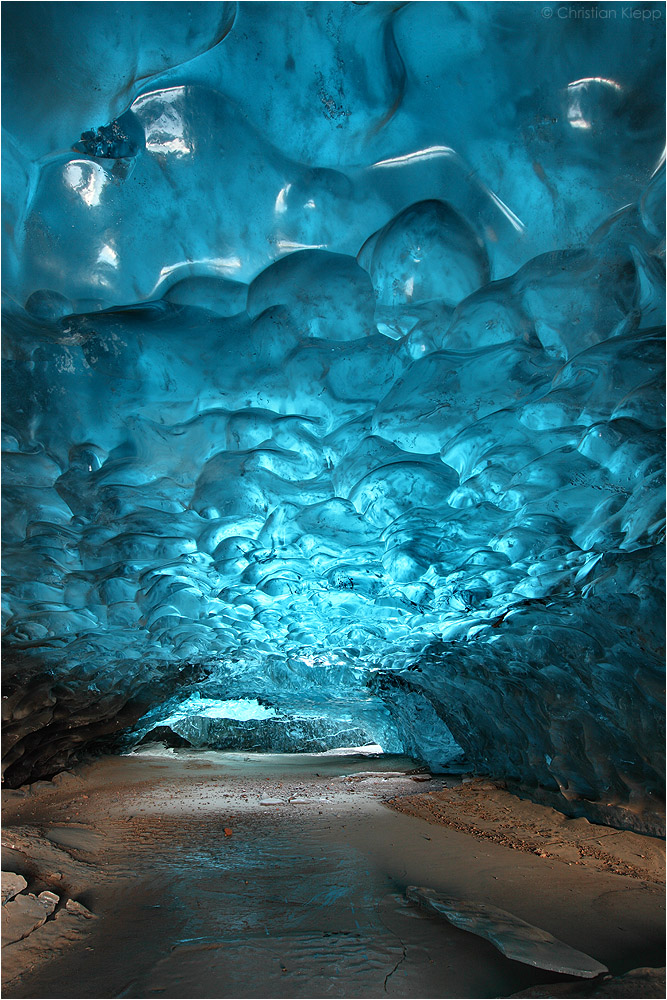






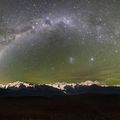

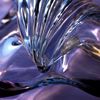






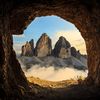











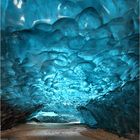
Andreas.Kasper 18/08/2018 15:52
Der blanke Wahnsinn. Ich musste wirklich genauer hinschauen, bis ich realisiert habe, dass das eine Eisgrotte ist. Auf dem Vorschaubild hatte ich es zunächst für Wolken gehalten, die evtl. stark nachbearbeitet wurden. So kann man sich täuschen.Ich glaube, ich muss diese Eisgrotte auch mal besuchen. Das Bild ist jedenfalls der Oberhammer. Bitte mehr davon.
LG Andi
Fotolehrling 1 15/02/2017 14:44
ein wunderschöner Blickfang ..VG
Hans Götz1967 28/11/2016 17:28
Außergewöhnlich gelungene Aufnahme. LIKEAntje Kirchhoff 14/06/2013 15:13
hammer, da ist man ganz sprachlos und frau erst recht. :)Simone Marchegiani 22/05/2013 15:47
bellissima e coloratissima immagine. uno spettacoloElvira Löwen 19/03/2013 23:03
Ein Wunder der Natur! Wunderbar anzuschauen.Gruß, Elvira
Björn Dähn 14/11/2012 12:50
Mein absolutes Lieblingsbild - einfach grandios! Ich liebe diese "Ablationsstrukturen", die hier einfach beeindruckend in Szene gesetzt sind und dem Bild etwas "fremdartiges" geben...Großes Kompliment!
LG
/bjoern
Steven Kumor 11/11/2012 11:43
leck mich am a.... geiles fotolg steven
biggi01 30/08/2012 14:51
Ich sehe heute dieses atemberaubende Foto zum ersten Mal und finde es absolut gigantisch!!!!!!!!!!!!!!!!!!!!!!JOJO-D40 28/07/2012 22:07
Sehr starkes Bild !Super getroffen !
LG
Fliegender Holländer 28/07/2012 10:15
Gut gewähltes Bild. Klasse LGDer Gelbe Bär 06/03/2012 19:56
Mir fehlen die Worte.EInfach wunderschön!
LG
Oliver
Ebru B. 15/12/2011 22:42
wirkt irreal, wowlaura .h 25/10/2011 15:48
+++Pictimpressions 07/10/2011 11:54
Unglaublich das Bild und genauso unglaublich was die Natur zu bieten hat.Toll...
Lg Andi